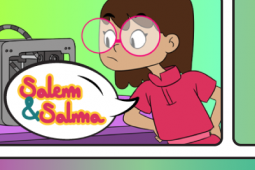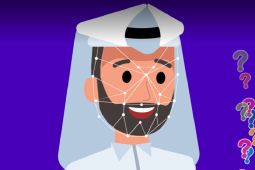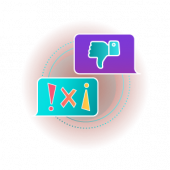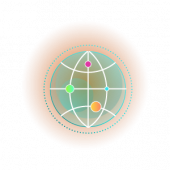I can use the internet to connect to a wider community.
Impact of Computer-Generated Imagery on Children
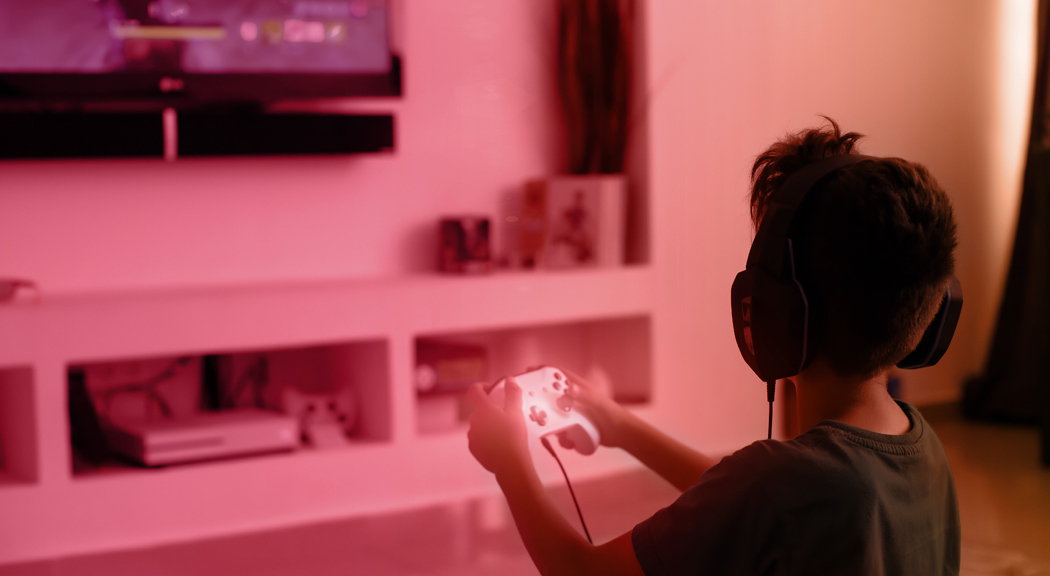
What is Computer Generated Imagery (CGI)?
At the most basic level, Computer-Generated Imagery (CGI) is the creation of still or animated visual content with computer software. CGI most commonly refers to the 3D computer graphics used to create characters, scenes, and special effects in films, television, and games such as the avenger movies, the hulk, superman, etc...
CGI is created using a range of different methods from 2D pixel-based image editors and vector shapes to 3D graphics software that can create everything from simple primitive shapes to complex forms made from flat triangles and quadrangles. 3D software can even simulate the way light reacts to a surface and generate particle effects.
Where CGI starts to get exciting is when computer-generated imagery is layered into digital film footage using a technique known as compositing. This technique is becoming more familiar to people as often referred to as a green screen.
Some features of CGI:
- Is one of the best and cost-effective methods when it comes to developing images and videos for electronic media like movies, video games, etc.
- The quality of the visual effects is higher and more pronounced and controllable compared to physical ones.
- Allows creation of images and effects which may not be feasible using other methods.
- CGI is far safer than physical effects.
How much impact does CGI used in today’s media have on my children?
CGI influences family functioning in varied ways. Learning and education, leisure and entertainment, household routines, work from home, personal development, extended family communication, e-commerce and civic involvement are possible affected domains. CGI is shaping a new culture and social system.
Childhood is a stage in the human life cycle encompasses and is a period of phenomenal biological, physiological, psychological, and social growth. Between infancy and the beginning of adolescence, about age twelve, the human acquires major life skills such as the ability to walk, talk, read, care for oneself, and come to know the world around them. During this time, the child's first encounters are the major agents of socialization: the family, peers, schools, and technology.
It is only after the age of 13 or 14 that most children begin to develop clearly formed values and habits according to Barbara Huberman, influential and previous Director of Education and Outreach at Advocates for Youth. Up to this age, the children’s personality, their code of ethics, and their values – all these are open to social influences in their environment. Today, visual media which has the power to reach such a vast number of people at one time can help tremendously in fostering the development of desirable values and habits in our country’s children.
Some of the impacts of CGI on children:
- The evidence indicates that it increases better academic performance also helps for better interaction compared with recognition, collaboration, and problem-solving:
CGI is being used widely by children for gaming, television, and movies, but whether animation can make children smarter remains to be seen and studied. Nevertheless, playing specific animated games has been found to have immediate Positive effects on specific cognitive skills that accelerates and enrich basic skills when used in a balanced & healthy way. Students who have access to technology become more quickly engrossed in the material, and as such are able to absorb the information more quickly. CGI can be more stimulating and interactive for children.
The point that echoes between both of these sources is that we are living in modern times with more options available to children, and educational models that would not have been accessible beforehand must be modernized to keep up. It cannot be expected for children to learn the same way as previous generations if they are expected to stay ahead in this fast-paced world.
Children’s use of Virtual reality glasses is improving cognitive skills since it's interacting in a complex world that is used in the academic world as being a student. The use of CGI not only can influence children’s cognitive and academic skills but can also determine children’s social interactions and development.
- The use of CGI especially playing games has a negative impact on children’s friendship and family relationships:
Children are always connected since it is a new different reality where anything is possible, a child that is 13 years old can play with adults in the same game, so they can be exposed to different types of reality where there are no limits or certain boundaries where usually in real life they are not allowed to do it or not exposed to it. it can be difficult to know for sure that the child using the game is being honest about their age or any of their information at all. Different types of discussions and behaviors can occur such as using curses that are above the child age to mitigate or understand.
This kind of exposure can make the child confused and act it out in real life since they perceive it as normal. If you go on Facebook and live streams of CGI influencers, which are virtual characters created with CGI and have an online presence the same as real online influencers, you will see children doing different types of interactions with these virtual influencers, and these interactions are usually not monitored or uncensored by caregivers.
On the other side, CGI influencers have managed to successfully push an active lifestyle on young gamers, as well as promote family time, which is crucial for childhood development, and this movement has been vastly successful. Children have been excited about these games since their introduction.
- Playing violent computer animation games may increase aggressiveness and desensitize a child:
The social effects of children’s computer animation use vary widely, depending on the amount of time spent, type of activity engaged in, and the nature of content or information delivered. For example, evidence suggests that games are most likely to lead to negative effects when the content of the games is violent. Many studies revealed that the majority of respondents stated that violent Animation programs can cause violent behavior in children. For example, it’s very easy for children to take a gun and shoot another person in games just for the fun of it, or because they are considered an enemy. This projection can lead children to violently act in real life since in virtual reality there are no consequences and it can be repeated as much as they can, and from repetition, habits are created.
- CGI can cause physical damage:
Playing animated computer games causes a number of physical risks to children, including seizures, hand injuries, and changes in heart rate.
Excessive computer-animated game playing also has been associated with a form of tendinitis, called Nintendinitis, which is a sports injury characterized by severe pain in the extensor tendon of the right thumb as a result of the repeated pressing of buttons during gameplay. To reduce the possibilities of such injuries, children should be given useful instructions for safe computer use, including such precautions as taking frequent breaks and positioning equipment properly.
- CGI improves visual reasoning skills:
Although older generations who are now just beginning to see this are not highly affected, children who have been developing along with these new high-speed games are showing an increase in their visual reasoning skills.
Visual reasoning is defined as the process of manipulating one's mental image of an object in order to reach a certain conclusion.
When we use any form of CGI, images are shown to us at speeds higher than ever before. We can watch high definition videos that make us feel like we’re in the picture. We have intricate visualizers that allow us to see our music. Games have been developed to look more realistic than ever.
Games today are made to look like reality. Characters are crafted with such detail that they could be mistaken for real people. Think of the contrast to what games had to offer twenty years ago: pixelated images of characters no bigger than your thumb. Now, children are seeing complex structures, monsters, machines, and worlds that enter into their vision at an alarmingly quick pace. Because of this sort of exposure, children today are more used to these images and as such can react to and understand them quicker than previous generations could have.
- Sexual content
You may have heard of the increasing concerns over deep fakes, where images of individuals (usually female celebrities) are mapped onto the face of an adult (sexual) performer. These videos are concerningly realistic, it’s very difficult to tell that they are fake. But within CGI we’re also seeing a rise in fake influencers too. For example, take a look at ‘Lil Miquela’ on YouTube or Instagram where she (it?) has 1.6 million followers. It isn’t difficult to see that Miquela is computer generated. You may be forgiven for thinking the images are of a real person and filters have been a little overused, but the videos clearly show that it’s CGI. What’s more, advertising agencies are using the likes of Lil Miquela to ‘influence’ their products and this is showing a concern to many parents.
How artificial intelligence is linked to CGI:
It comes as no surprise that artificial intelligence is now entrenched in computer-generated imagery; and those in charge of machine learning feel the capabilities are there for AI to create genuine CGI.
For an example of how AI is producing hugely popular images that are capturing the imagination of millions, look no further than Snapchat filters and the app, Prisma.
It’s not only the filters where Snapchat is using machine learning: AI is helping to define which stories show up in your news feed when you’re on the app by understanding your user journey.
Prisma, the hugely popular photo transformation app, also uses AI to transform smartphone images into stylized artwork from different genres. On the face of it, this type of capability is just a bit of extra fun to add to your photography.
Victor Riparbelli, CEO at Synthesia, who is developing AI to generate synthetic video, thinks the possibilities to take advantage of these methods indicate exciting times. “We are not far from being able to easily generate artificial media that is indistinguishable from the real thing. In the future, music, pictures, and videos will increasingly be created by computers, and we will not be able to tell the difference.”
How can I notice this impact? How can I avoid it? What can I do when I know that my children are being affected?
Safety has become a major concern for parents who are trying to keep control of their children in an increasingly busy and distracting world. As our lives get more chaotic and crowded, you have been looking for more efficient and reliable ways of keeping an eye on where your children are at all times.
Simple ways to notice that your child is being affected:
- The child will spend more than usual on games for example more than 4 hours per day on a school night.
- Screaming during the game constantly causes them stress and anxiety while talking online with his or her friends.
- Lack of direct communication or attend routine based daily life events, such as having dinner together as a family or constantly connecting during eating.
- The child may reach a stage where they don’t go to the toilet and keep proper hygiene.
- Lack of affection toward siblings, parents, grandmother, etc.… where the child is not interacting with other persons and only shows attention to the games.
- The child is opening new subjects usually not heard in school, at home, or in other familiar places.
- Suddenly refusing to go online and play games.
- confusion between reality and virtual life.
- High preference not to try anything in real life and only to do it in virtual life.
- Any physical damage such as Nintendinitis
It is a fact one of the negative consequences that are faced due to exposure of children to CGI is health; however the problem is not CGI/technology/games, it is doing any one thing to the exclusion of all others, a child reading books every minute all day, every day, is not a good idea either... Kids need a balance of play with all their senses and the more we can use our bodies while playing with digital devices, the better for children. And kids also need a balance of the real (nature) and the invented (all arts, including the computer and video).
As long as children can get some useful guidance on how to figure out which works for them best, that is what we need parents and teachers, to help us reflect on our experience and learn from it.
A great and best solution is to always build a family agreement with your children, the best way is for them to talk to you about what they are seeing, talking, which information that they are exposed to:
- Make sure that you set the rules and that your child is in agreement
- Consider setting up a family account
- Turn on safety mode
- For younger children create playlists and don’t forget to watch the video in its entirety before adding it to your playlist as an example
- Watch with your child and scroll through the comments as well
- Teach your child to respect the over 18-age limit
- Remind your child to avoid clicking on ads, no matter how enticing
- Teach your child how to block and report
- If your child raves about a vlogger or YouTube influencer, do your research and check them out. You may be pleasantly surprised that the vlogger is a great role model.
The main subject of the family agreement is to base it on how your children should think critically:
- What is the purpose of this image/video?
- What are they trying to do, or influence me with?
- Why are they talking about this product?
The above is a good frame to use since your children are living in a world full of new experiences, technologies, and fascinating games. The technology in general that delivers this service is going to keep changing, whether we use it to connect with each other or to yell at each other, to help each other or to incite each other to hatred, are what really matters and for that to work, we have to go back to the values, we have to be moral in the digital world, just as we do in the real world.
@2x.png)


